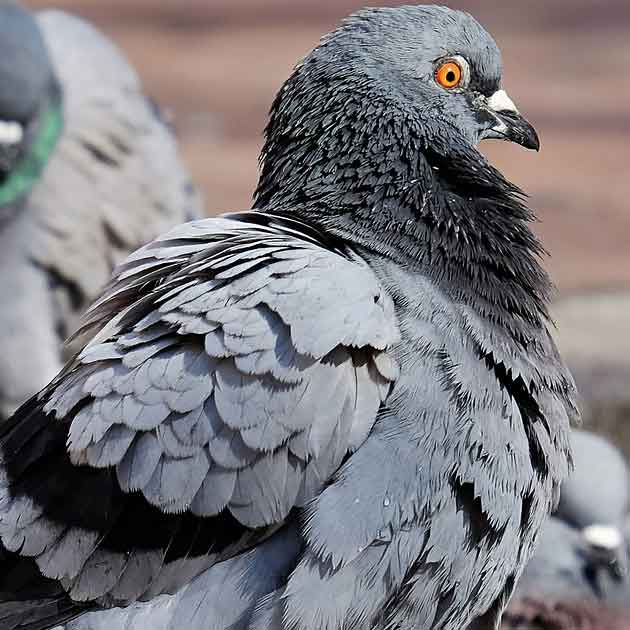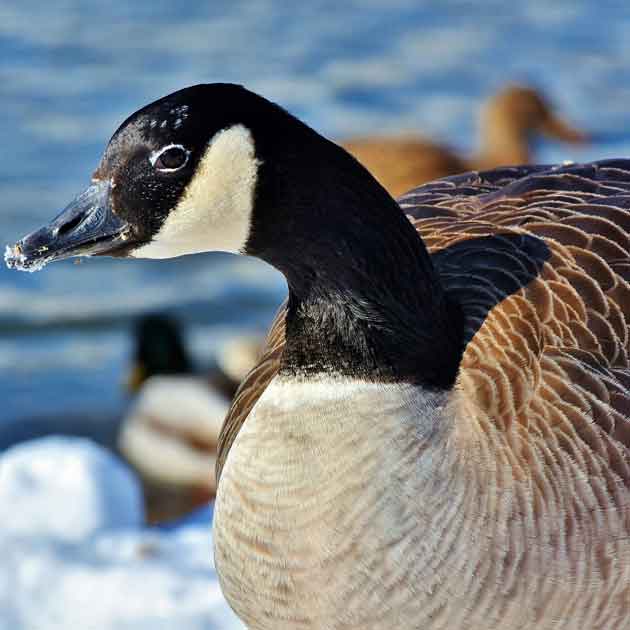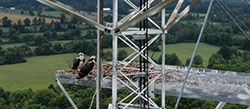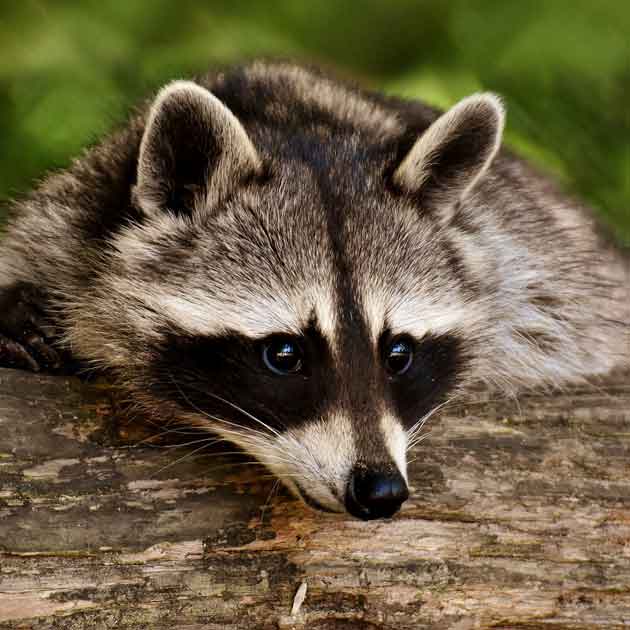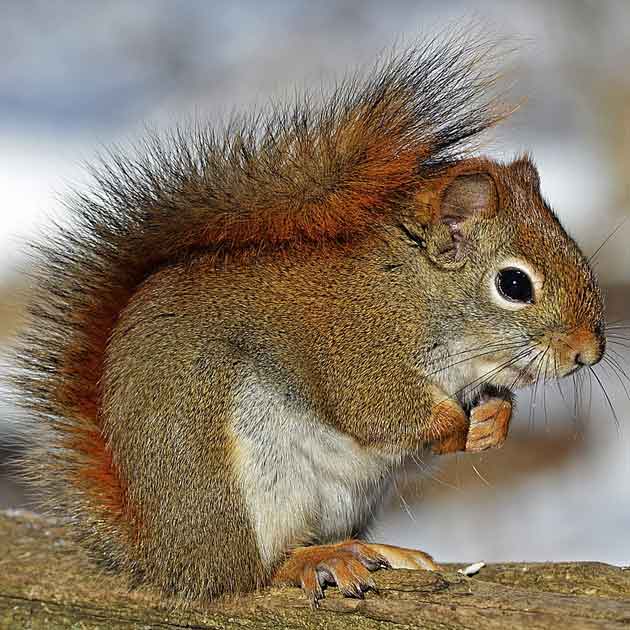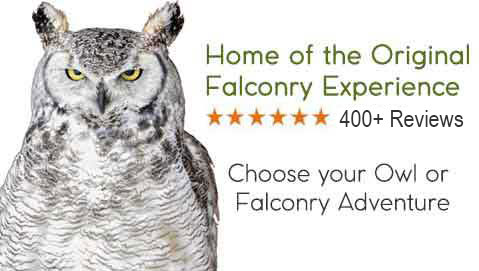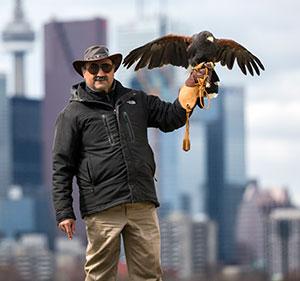BLOG | Hawkeye
News, little truths and wisdom regarding Pest Bird & Animal Wildlife Control, Falconry, and Birds of Prey....
Rooftop Goose Control in Vaughan
- Written by: Dan Frankian
You'd expect Canada geese to invade our beaches and parks (and they do!) but you rarely look up to discover geese nesting on rooftops. You're not alone. We don't usually think of geese up high, but it actually makes sense, particularly, in Vaughan's industrial areas with lots of flat roofs. Let's explore this often overlooked issue of bird control for industrial, commercial, and residential flat roofs all across the GTA.

Why Rooftops Attract Canada Geese
- Most people associate geese with grassy parks and ponds, but rooftops—especially flat, open commercial roofs—are ideal for geese.
- Key factors that make Vaughan rooftops appealing:
- Height offers protection from ground predators;
- On cooler days, HVAC vents and reflective surfaces offer some added warmth;
- Rainwater often pools on flat roofs and affords a quick drink;
- There is little to no human traffic or interference;
- Many of Vaughan’s industrial buildings, malls, and offices offer the perfect combination of space and security for geese.
Hidden Risks of Rooftop Goose Roosting
- Accumulated droppings pose a health hazard, such as slip and fall accidents and/or the introduction of pathogens;
- Ventilation systems can become contaminated and threaten the health of building occupants, particularly those with compromised immune systems or respiratory issues;
- Geese droppings also cause corrosion and damage to the roof itself;
- Clogged drains from droppings, feathers, and nesting materials can lead to water pooling and potential flooding that leads to costly roof damage;
- Spring nesting and overprotective nesting pairs cause delays to roofing work, HVAC servicing, or solar panel maintenance;
- Legal complications due to Canada geese being protected by the Migratory Birds Convention Act;
- Improper geese removal methods in Vaughan can lead to fines or lawsuits.
Common Rooftop Goose Deterrents to Avoid
- Audio deterrents, visual decoys (like fake owls or predator balloons), sprinklers, and motion sensors are largely ineffective;
- Geese are intelligent and highly adaptable; they quickly learn to ignore these devices;
- Egg oiling or addling also doesn’t provide immediate results:
- Geese continue to sit on unviable eggs and will be around all summer;
- It may take years for them to abandon the site in spite of no eggs hatching;
Get Rid of Raccoons from Homes Near Pickering’s Ravines and Green Spaces
- Written by: Dan Frankian
Pickering and Ajax are two communities located only half an hour east of Toronto and known for some of the best hiking and cycling trails, lush ravines, and a beautiful waterfront. Forested neighbourhoods near Rouge Park, Altona Forest, or Duffins Creek Valley offer charm and an almost rural feel but they also act as natural raccoon highways, bringing animals from the wild to residential and commercial areas—especially in the fall as raccoons seek warm dens for overwintering.
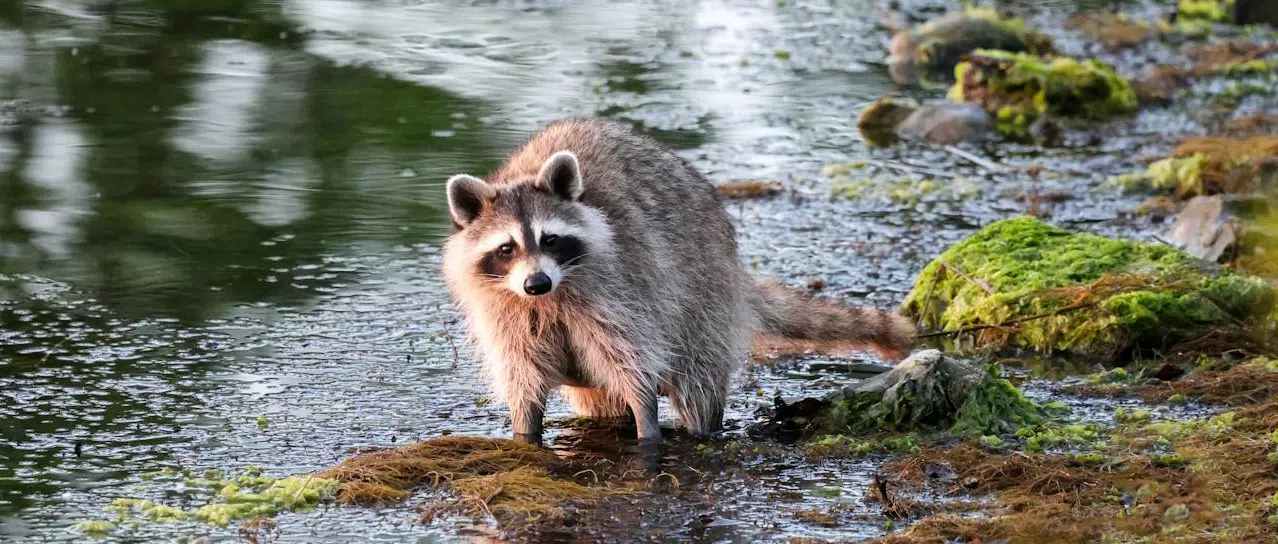
Due to loss of habitat and their incredible intelligence and adaptability, raccoons don't stay in the forest - they move into your home.
Why Fall Triggers Raccoon Infestations from Green Spaces
Survival Instinct
Fall is the season to prepare for long and often harsh Ontario winters. Here's what raccoons are looking for:
- Warm and secure shelter to build a winter den;
- Consistent food sources, often provided by unwitting humans (garbage, compost, outdoor pet food, etc.).;
- Quiet places with little human interference; this could be garden sheds and other outbuildings, attics, storage units, or under decks and porches;
The Urban-Forest Edge Effect
Neighbourhoods that border ravines are highly attractive due to the availability of water, seclusion, and food. Raccoons are rather opportunistic creatures and much prefer a quick and easy meal over one that needs to be chased down. Hence, they have learned to appreciate human offerings and view areas near the forest edge as ideal habitats.
Raccoon Hotspots in Pickering: High-Risk Ravine-Edge Zones
Residents and property managers in the following areas see a stark increase in raccoon activity once autumn has arrived: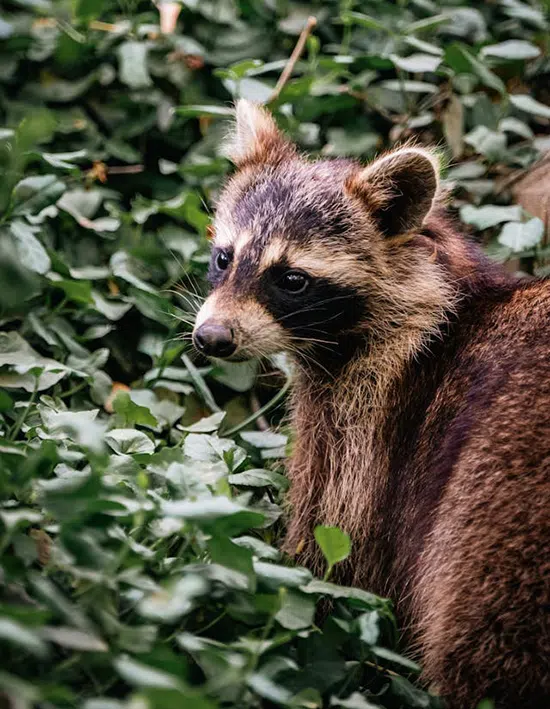
Rougemount / Highbush
- Proximity to Rouge National Urban Park and a natural wildlife refuge;
- Older homes, featuring large lots and mature trees;
- Raccoons can easily access rooftops via fences and branches.
Altona Forest / Amberlea
- Homes and schools are bordering dense forest;
- Green bins, school dumpsters, and open vents make for common entry points;
- We receive many reports of raccoons entering attic crawlspaces.
West Shore / Bay Ridges
- Close to Frenchman’s Bay and marshland trails;
- Ideal for raccoons nesting under sheds, decks, or boathouses.
Duffins Creek Corridor
- New developments + preserved lands = wildlife mixing with homes;
- Commercial developments near hydro corridors and wooded lots are also affected.
Why Raccoons Easily Move Between Ravines and Homes
- Unlike skunks or groundhogs, raccoons are motivated and agile climbers: They use fence lines, tree branches, and even utility poles to cross from ravines into backyards and rooftops;
- Raccoons are also clever and strong and readily rip soffits, pry open vents, and dislodge shingles to gain access to homes.
- Temporary exclusion methods fail when there’s a ready refuge in nearby woods.
Read more: Get Rid of Raccoons from Homes Near Pickering’s Ravines and Green Spaces
Why Detached Homes in Toronto Face a Higher Risk of Raccoons in the Fall
- Written by: Dan Frankian
Especially Toronto's older, well established neighbourhoods see a scurry of raccoon activity once fall arrives. Toronto's detached homes, often surrounded by trees and green space, are particularly attractive to raccoons looking to find a secure and warm space to overwinter.
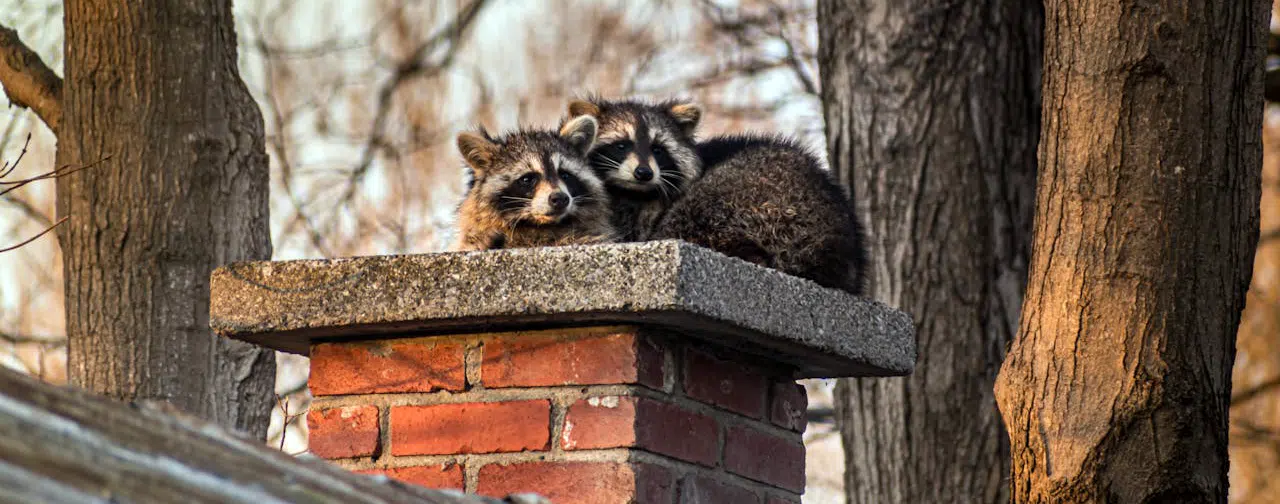
This article explains why these homes are high-risk, what homeowners can do, and why permanent raccoon removal in Toronto is often necessary.
Why Fall Brings Raccoons Closer to Homes
- Winter is Looming
Fall is the preparation phase for surviving Toronto's harsh winter; - "Mi Casa es Su Casa"
Urban raccoons have adapted to treat your home as part of their natural habitat and once inside, will not leave voluntarily; - Winter Denning and Torpor
While raccoons don't actually hibernate, they do slow down considerably and enter a phase of torpor. Having a a warm and sheltered space to settle down in is essential;
Autumn is the last opportunity to act before winter nesting begins and you're stuck with uninvited house guests for months to come.
What Puts Detached Homes at a Higher Risk Compared to Townhomes?
- More Entry Points
- Detached homes have more independent architectural features, such as multiple gables, vents, chimneys, and soffits.
- Aging roofing materials, unsealed attic vents, and gaps in eaves make perfect access zones.
- Garages and sunrooms are often overlooked but accessible.
- Surrounding Vegetation
- Trees, climbing vines, and fences serve as natural ladders to roofs.
- Detached homes are usually landscaped, increasing raccoon mobility.
- Unpruned branches near rooftops can bridge the gap for entry.
- Outdoor Waste Storage
- With no shared waste system, detached homeowners often leave bins outdoors overnight.
- Raccoons target unsecured compost bins, pet food, birdseed, and fallen fruit.
- Unlike condos, there’s less deterrence from noise, lighting, or human traffic.
- Lack of Regular Exterior Surveillance
Read more: Why Detached Homes in Toronto Face a Higher Risk of Raccoons in the Fall
Get Rid of Raccoons around Etobicoke Medical Clinics
- Written by: Dan Frankian
Unsanitary conditions are a problem in any scenario - but when it comes to medical facilities, they are downright dangerous and can even be life threatening. Etobicoke, like many areas across the GTA, has seen a stark increase in raccoon population and activity, and medical clinics and healthcare facilities are no exception.
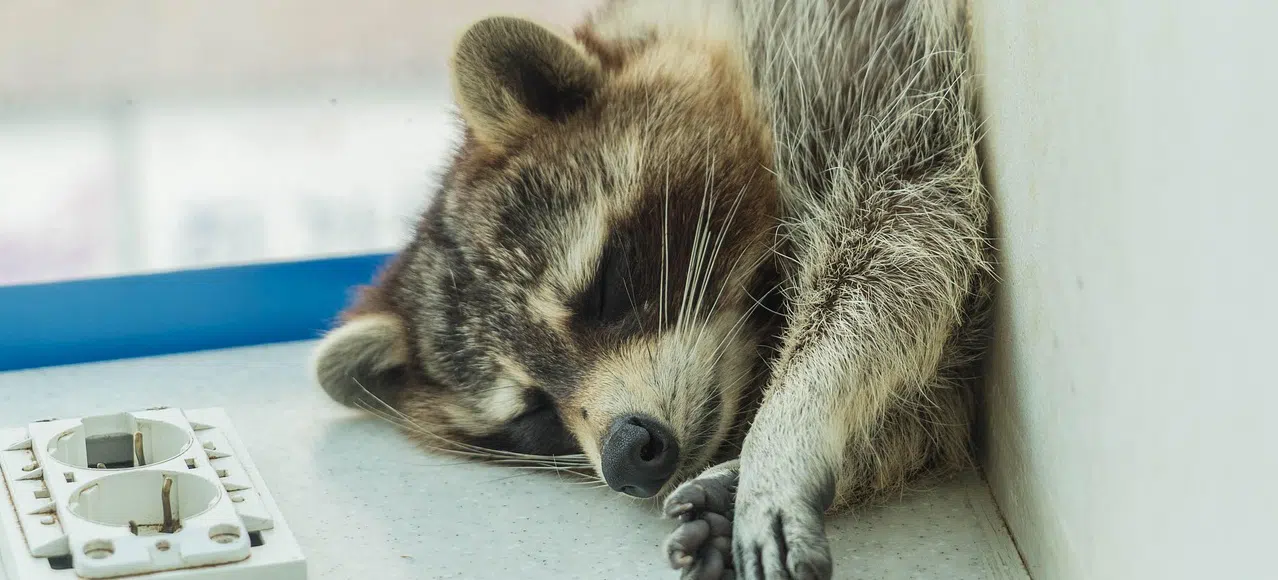
Sensitive environments like doctor's offices, health clinics, hospitals, or medical labs have to have zero tolerance for wildlife presence due to the extreme health, hygiene, and legal risks. The potential consequences of introducing pathogens in these places and around people with already compromised immune systems or general health are unthinkable.
Read on and learn how to get rid of raccoons around these and other facilities in Etobicoke - from simple trapping and releasing to permanent raccoon removal. Other Toronto area wildlife control services for healthcare buildings cannot offer the option of permanent removal - but Hawkeye Bird & Animal Control can and does.
Why Medical Clinics and Childcare Buildings Attract Raccoons
- Architecture
Medical buildings often feature older rooftops, ceiling tiles, or HVAC openings and offer easy entry points for raccoons and other wildlife; - Food Availability
Medical waste bins, food storage, and kitchen areas attract raccoons; - Human Traffic
Lower activity in the evenings and during weekends makes these buildings perfect for nesting; - Hidden Areas
Crawlspaces, attics, and drop ceilings offer warm, quiet nesting zones.
 Hidden Dangers of Raccoons in Healthcare Facilities
Hidden Dangers of Raccoons in Healthcare Facilities
- Biohazard Concern
Raccoon feces contains Baylisascaris procyonis (roundworm), Leptospirosis, and other parasites, which can infect and greatly endanger immunocompromised patients; - Infection and Contamination
Hair, urine, and fleas easily contaminate sterile areas and equipment; - Chewed Medical Wiring
Raccoons can cause a lot of damage to healthcare facilities, including chewed wiring, which can impact patient monitoring or life-safety systems; - Disruption of Daily Operations
Noise and odor can interrupt clinical care and nap hours; - Regulatory or Legal Implications
The presence of raccoons leads to increased risk of public health inspections, fines, or temporary shutdowns.
What’s at Stake – Health, Compliance & Public Trust
- Public Health Ontario can shut down facilities if contamination or wildlife risk is observed;
- Patients may report facilities for unsafe conditions;
- Insurance rarely covers wildlife-related contamination or closures;
- Your reputation is at risk, especially in regulated industries where safety and cleanliness are mandatory.
Why Temporary Fixes Don’t Work in Regulated Facilities
Read more: Get Rid of Raccoons around Etobicoke Medical Clinics
How to Protect Your Crops from Canada Geese in the GTA Greenbelt
- Written by: Dan Frankian
As we continue to learn how detrimental to our health processed foods are, protecting local food production is becoming more important and more necessary. Ontario farmers work hard all summer long, but they are often faced with significant challenges when it comes to pest birds, such as Canada Geese. If you are a farmer and find your fields invaded by geese, this article is for you.
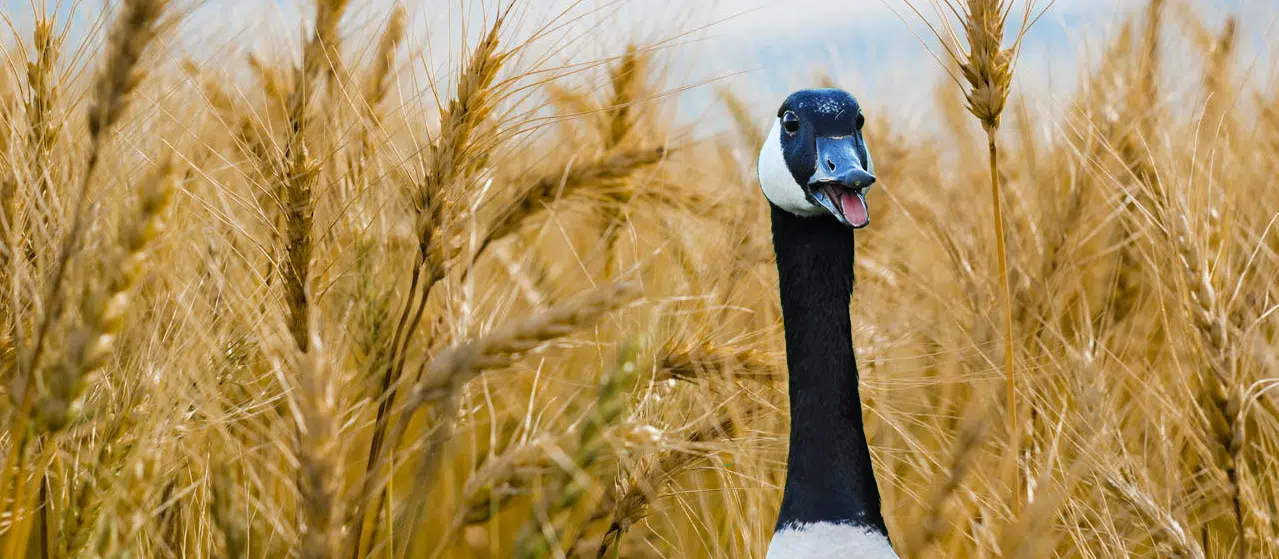
How Can I Protect My Crops from Canada Geese in the GTA Greenbelt?
The short answer is by partnering with an experienced goose control company and by implementing a multi-faceted, adaptive geese management plan for your farm that integrates a number of deterrence methods over months or even years. But, let's look at this in more detail:
The Importance of Ontario's Greenbelt
- “Greenbelt” is a general term used to describe natural, undeveloped, and/or agricultural lands that surround urban areas. These lands may include open spaces, parks, forests, farms, vineyards, and wetlands. Currently, the Greenbelt protects over two million acres of land and nearly 40% of this acreage is farmland.
- Greenbelt areas act as natural buffers during wildfires and provide essential groundwater during droughts. They add to biodiversity, help balance ecosystems, and offer refuge in nature for many of us city dwellers. And, much of our local, organic food is grown here.
The Impact of Canada Geese on GTA Greenbelt Agriculture
Large flocks of Canada geese are a familiar and often welcome sight for many, signaling the arrival of spring and summer but their invasion of agricultural fields can be devastating to the crops, the farmers, and by extension our local food supply. Geese foraging in large numbers are capable of consuming 30 acres of wheat, cover crops, or alfalfa fields in just a day or two.
- Loss of Production
A large flock of geese can decimate entire fields and render the harvest moot; - Financial Loss
Ontario farmers are already stretched to the limit - a single season of crop destruction and the cost of replanting can spell the end of century old family farms; - Quality Degradation
Even if the crop isn't outright destroyed, grazing geese still diminish crop yield and quality;
Why Canada Geese Are a Growing Problem for Greenbelt Farmers
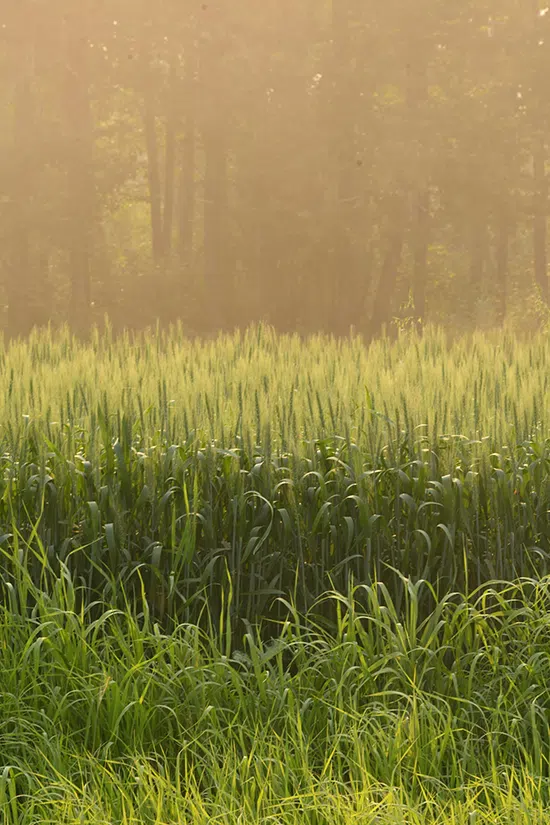 General Overpopulation of Canada Geese
General Overpopulation of Canada Geese
As geese are adapting to life alongside humans and learn to not just survive but thrive in urban environments and surrounding greenbelts, the geese population is exploding. More goslings than ever survive their first few years of life and reproduce;- Goose Behaviour & Diet
Canada geese show a distinct preference for tender, young crop shoots and grasses;
Due to their high metabolic rate geese have a constant need for foraging;
Geese have an intricate social structure and gather in large flocks which cause extensive damage quickly;
Farm fields offer open areas and a clear line of sight, often with nearby access to water; - Seasonal Vulnerabilities of Crops
Spring: Emerging seedlings (corn, soybeans, and wheat) are available early and highly palatable;
Summer: Geese graze on leafy greens, specialized crops, and newly harvested fields;
Fall/Winter: Resident geese graze on winter wheat, cover crops, and gleanings; - Impact Beyond Consumption
Even smaller flocks damage plants and soil by trampling and compaction:;
Droppings can contaminate crops, affecting marketability and food safety;
Agricultural fields inadvertently provide ideal goose habitats.
The Impact of Geese on Crops
- Direct Damage
Grazing, trampling, uprooting seedlings - crop destruction in the current year; - Indirect Damage
Soil compaction, fecal contamination, and the introduction of pathogens can threaten future growing seasons; - Economic Costs
Yield loss and replanting costs plus insurance complications put further strain on farmers;
Legal Limitations: What Farmers Can and Can’t Do
- Canada geese are protected under the Migratory Birds Convention Act (MBCA);
- It is illegal to harm geese, their eggs, or nests without a permit;
- ALL Canada goose control methods require a permit from the Canadian Wildlife Service before work begins;
- Failure to obtain the necessary permits will result in charges and fines.
Proven Strategies for Goose Control on Farmland
Falconry (Birds of Prey)
- Falconry is the most natural and effective agricultural goose deterrent;
- Geese recognize raptors as predators and instinctively avoid areas where eagles are active;
- Falconry for goose control is particularly effective during planting, early growth, and pre-harvest stages.
Trained Working Dogs
Read more: How to Protect Your Crops from Canada Geese in the GTA Greenbelt
How to Trap and Get Rid of Raccoons in Vaughan Warehouses
- Written by: Dan Frankian
Many warehouses in Vaughan (and in fact, all across the GTA) attract the attention of raccoons and other urban wildlife. Never ending nooks and crannies to hide out in, easy access in and out, and often even a built-in self-serve buffet make for very adequate accommodations all year round.

Why Raccoons Should Not be Allowed in Warehouses
Raccoons can be quite destructive and even shut down operations for some time, depending on the contents of the warehouse. Here are some of the problems caused by raccoons dwelling in a warehouse:
- Damage to Inventory
Raccoons are prolific chewers and diggers and damage to or contamination of inventory can be extensive; - Structural Damage
When raccoons are occupying your warehouse, you can expect chewed wires, damaged or destroyed insulation, and comprised roofs and/or walls).; - Health & Safety Risks
If raccoons are hanging out in a warehouse, you'll likely find one or more latrines. Raccoon droppings contain a great number of parasites, and latrine contents are highly corrosive. Of course, actual encounters with onsite raccoons offer the potential for bites or scratches - and the risk of rabies; - Operational Disruptions
Having raccoons or other wildlife present in a warehouse poses a health and safety hazard for employees AND can get the Health & Safety boards involved, particularly if the inventory is food-related or contains medical equipment.
Why Do Raccoons Target Warehouses in Vaughan?
- Provision of Shelter
A warehouse provides ample space, privacy and quiet corners. - Food Availability
Depending on the contents of the warehouse, a meal can come from the inventory itself, or from waste left behind by humans; - Easy Access
Due to the nature of warehouses, it may be virtually impossible to restrict access to local wildlife. In addition to loading docks with roll-up doors raccoons also exploit roof vents and HVAC units to gain access; - Climate Control
When seeking refuge from the elements, raccoons often get to enjoy at least some heat or ventilation, making the inside of a warehouse much more attractive than the harshness of the outside world. It stands to reason that warehouse occupation increases in late fall.
How to Detect a Raccoon Presence in Your Warehouse
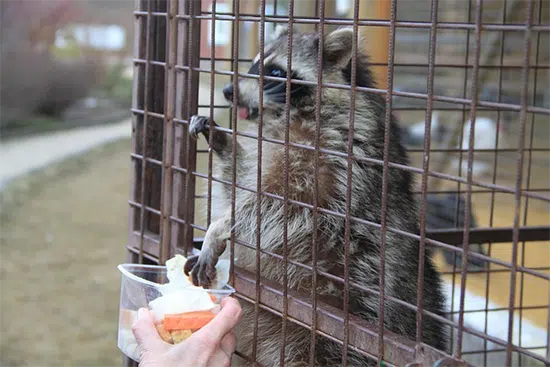 Unless you actually see the animal, you may not be sure what you're dealing with. Here are some things to look for if you suspect a raccoon infestation:
Unless you actually see the animal, you may not be sure what you're dealing with. Here are some things to look for if you suspect a raccoon infestation:
Listen for Raccoon Noises
Granted, it may not be easy to hear anything in a busy warehouse. But when machinery shuts down and workers have left, pay attention to rustling and thumping overhead in the rafters or ceiling as well as behind boxes and in corners.
Check out Electrical Issues
Have a close look at the condition of wiring and check if wires look chewed and/or frayed. As female raccoons prepare birthing dens, they frequently move wires or sever them to make room.
Look for Displaced Insulation
Also in pursuit of the ideal den location, insulation is often moved or destroyed.
Notice Raccoon Droppings
Pay attention to droppings on the floor, near dock doors, or smells of urine or feces.
Perform Regular Inspections
It's a good idea to inspect less-accessed areas regularly. Storage lofts, rafters, above ceiling tiles, or seldom used maintenance rooms. Additionally, the use of motion sensor cameras or thermal imaging devices can help with raccoon detection.
Read more: How to Trap and Get Rid of Raccoons in Vaughan Warehouses
Is It Illegal to Destroy a Canada Goose Nest?
- Written by: Dan Frankian
The breeding and nesting season for Canada Geese begins early each spring and families of geese are with us all summer long. And, with their stay come a host of issues - from mild annoyances to goose attacks, property damage, and the threat of diseases.
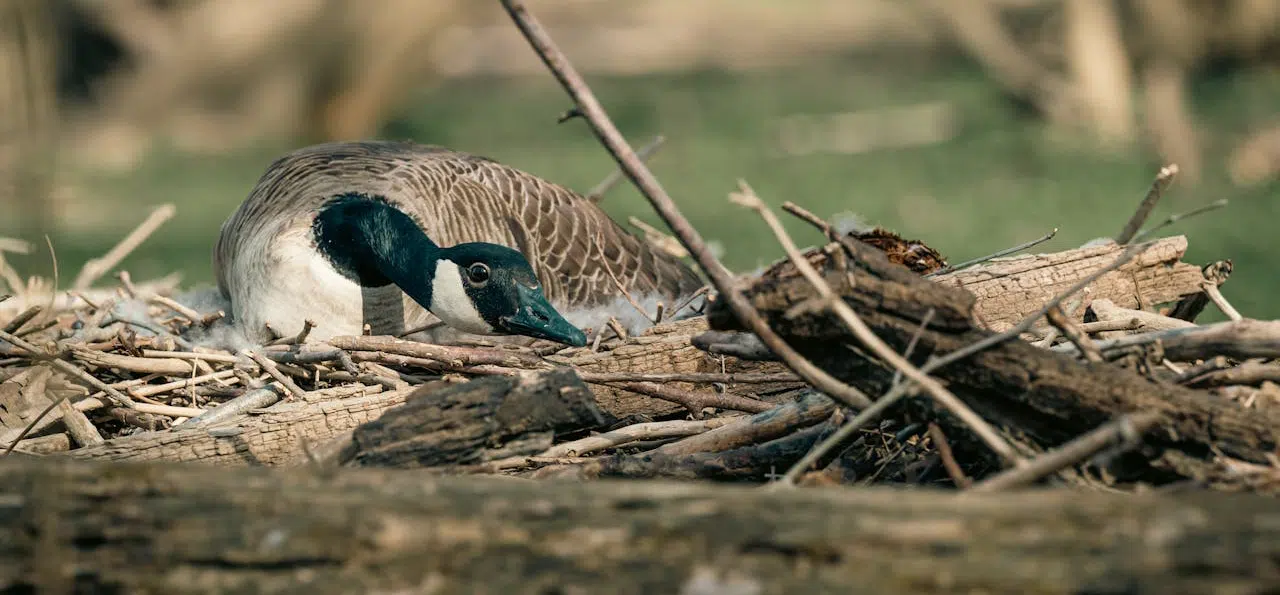
Many home and property owners desperately seek solutions to get rid of geese from residential and commercial properties. While destroying a goose nest before the goslings hatch is the most effective way to discourage geese from lingering until their fall migration AND reduce the probability of them returning to the same spot next year, there are some legal considerations.
So, Can You Legally Destroy a Goose Nest?
Yes - but ONLY with a permit issued by the Canadian Wildlife Service. Let's look at this in more detail...
Why You Can't Just Destroy a Goose Nest
The Migratory Birds Convention Act, 1994 (MBCA): The Primary Federal Law
The Migratory Birds Convention Act (MBCA) is a Canadian law, that was originally created in 1917 and updated to its current version in 1994. It is based on the Migratory Birds Convention (also known as the Migratory Bird Treaty) which was agreed upon and signed by Canada and the United States in 1916. The Act aims to protect migratory birds, their eggs, and nests from activities like hunting, trafficking, and commercialization without proper permits. It also allows for the creation of Migratory Bird Sanctuaries.
The Migratory Birds Convention Act prohibits the killing, disturbing, removing, owning or selling, or destruction of migratory birds, their nests, and their eggs without a permit. Canada Geese are migratory birds and covered by this Act.
Ontario's Fish and Wildlife Conservation Act, 1997 (and associated regulations)
The Fish and Wildlife Conservation Act from 1997 (FWCA) in Ontario regulates the hunting and trapping of wildlife, including geese. Although the FWCA doesn't specifically target geese, it does protect wildlife in general, including goose nests and eggs. Canada Geese, are also subject to the Migratory Birds Convention Act, 1994 (Canada) which provides additional protections.
All permits surrounding geese control, removal, and/or management are issued by the Canadian Wildlife Service, and they are generally granted only when there is a demonstrable need to protect public health, safety, or property. Permits are required for each method of goose control and each location, as deemed necessary. The Canadian Wildlife Service's prominent role is to protect wildlife and prevent unnecessary suffering.
Municipal By-Laws
Additionally, interference with geese and other wildlife may be further regulated by municipal by-laws. Virtually every city and town in Ontario has by-laws that prohibit the feeding of wildlife on public or private land. Under Toronto’s Animals By-law, feeding wildlife can earn you a fine of up to $365. By-laws such as this aim to help wildlife stay wild and out of harm's way.
What Are the Fines for Disturbing Canada Goose Nests Illegally?
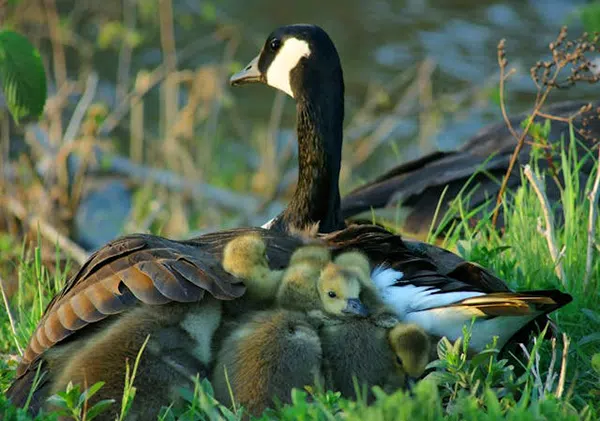 Penalties under the MBCA:
Penalties under the MBCA:
- Fines for unlawfully destroying, taking, or disturbing eggs
The set fine for any of these offences is $200 per egg; - Fines for unlawfully damaging, destroying, removing, or disturbing a nest
The set fine for for any of these offences is $200 per nest; - Fines for unlawfully buying or selling a migratory bird, nest, or egg
The set fine here is $300 per bird, nest, and egg; - Potential for more severe penalties for repeat offenses or large-scale destruction
In the past, the Ontario Court of Justice has handed down convictions and issued fines of $5000 or more.
What Else could Happen if You Destroy a Canada Goose Nest Illegally?
- You will face charges under provincial acts;
- In addition to fines, you will encounter court and legal costs;
- Ignorance of the law is not a defense.
Ethical and Practical Considerations:
Canada Geese are territorial and fiercely protective of nests and their offspring. The gander's primary role is to protect the female and the nest. As a result, both he and the female will aggressively defend their nest and may cause severe injuries in confrontations.
How to Get Rid of the Dangers of Raccoon Litters
- Written by: Dan Frankian
Early summer is when you are most likely to encounter a raccoon family in or around your home or property. As the babies are becoming mobile and mother raccoon takes them to explore the outside world, you may hear more pronounced ruffling, thumping, and even cooing or screeching, particularly in the hours between dusk and dawn.
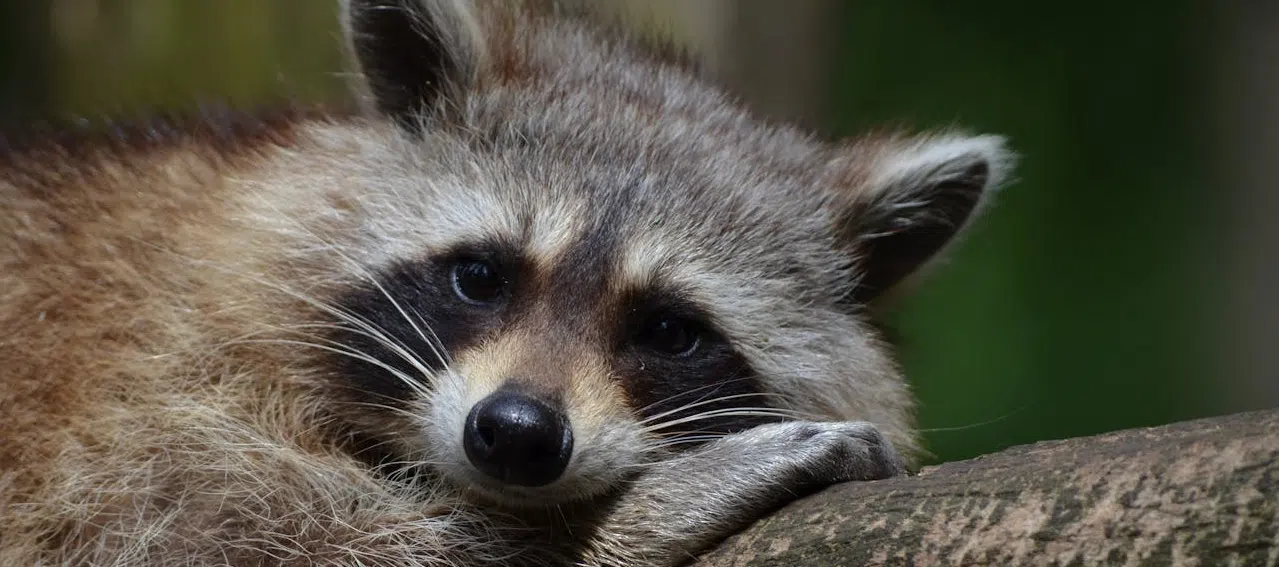
Raccoons give birth in early spring, generally to litters of an average of 4 kits. Your attic, chimney, crawl space, or any low-traffic outbuildings make for perfect raccoon dens. Baby raccoons are born hairless and blind and will be cared for 24/7 by their mother for the first 3-4 weeks of their lives. Adult raccoons are often regarded as mostly a nuisance, but adults and kits alike actually pose a serious threat to human health and property.
What Are the Health Risks Associated with Raccoon Litters?
Health risks extend to your family and your pets. Those include:
Raccoon Roundworm (Baylisascaris procyonis)
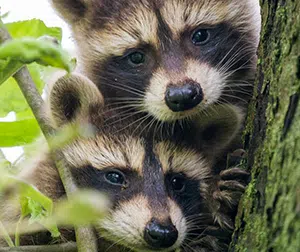 This is a highly resilient parasitic worm found in raccoon feces and is transmitted by ingestion of microscopic eggs found in soil, dust, and contaminated surfaces. Children and pets playing outdoors are especially at risk.
This is a highly resilient parasitic worm found in raccoon feces and is transmitted by ingestion of microscopic eggs found in soil, dust, and contaminated surfaces. Children and pets playing outdoors are especially at risk.
Symptoms and Consequences:
- Ocular Larva Migrans (OLM) – vision loss, blindness;
- Visceral Larva Migrans (VLM) – organ damage (liver, brain, lungs);
- Neural Larva Migrans (NLM) – severe neurological damage, coma, death (especially in children).
Leptospirosis
Leptospirosis is a bacterial disease spread through raccoon urine and is transmitted by contact with contaminated water or soil; this could be via open cuts, mucous membranes, or ingestion.
Symptoms and Consequences:
- Flu-like symptoms;
- Can lead to kidney damage, liver failure, and meningitis.
Rabies (though less common, still a significant risk)
Rabies is a viral infection affecting the nervous system. Transmission occurs from saliva, through bites or through contaminated water.
Symptoms and Consequences:
- Early signs mimic flu symptoms, including fever, headache, and general weakness;
- As the disease progresses, more distinct neurological symptoms appear, including anxiety, confusion, hallucinations, and potentially paralysis;
- Aversion to water (hydrophobia) and excessive salivation can also occur;
- Fatal, if not caught and treated early.
Other Potential Pathogens and Pests:
- Fleas, Ticks, and Mites
Can lead to other diseases (e.g., Lyme disease) in humans and pets; - Bacteria
Bacteria such as Salmonella and E. coli can be transmitted via fecal contamination; - Fungal Spores
Spores such as Histoplasmosis can be released from disturbed droppings.
Common Areas for Raccoon Dens and Litters
Residential Properties:
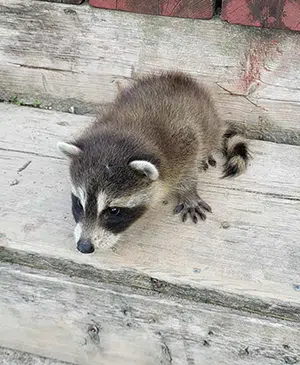 Attics, wall voids, chimneys, basements;
Attics, wall voids, chimneys, basements;- Under decks, sheds, woodpiles, compost bins;
- Garages and crawl spaces.
Commercial/Industrial Properties:
- Rooftops, ventilation systems, abandoned areas;
- Warehouses, storage facilities, loading docks;
- Undersides of portable structures or equipment.
How Do You Handle Aggressive Mother Raccoons?
- Written by: Dan Frankian
Are you finding yourself at the receiving end of some raccoon rage? Well, that's not entirely surprising, given the time of year. Let's explore why raccoons may be more aggressive than usual right now and what to do about it, shall we?

Why Does Summer Bring More Raccoon Activity?
Raccoon kits are born in late spring and early summer, also known as baby raccoon season. So, an overly aggressive raccoon is most likely a new mother, protective of and worried for her little ones. Raccoon babies are born blind and hairless and depend entirely on their mother for survival. The increase in aggressive mother raccoon sightings during this time of year is mostly due to litters of 2 to 7 kits (with most litters averaging around 4). Of course, there is also the threat of rabies. If you observe a raccoon off-balance., lethargic, OR overly aggressive and you do not suspect a litter nearby, it is advisable to call your municipal animal control and inform them of your observations.
- Protecting Her Young
Momma Raccoon stresses about the safety of her babies and is ready to defend them at the drop of a hat - particularly against male raccoons; - Intensive Foraging
Females will forage more so than usual for food (garbage, pet food, garden produce, accessible bird feeders, fruit trees, etc.) to sustain themselves and their growing litter, making any property with available resources a prime target.
Where Will You See Increased Raccoon Activity?
- Common nesting sites include attics, garages, chimneys, crawlspaces, sheds, and rooflines;
- Businesses may find nests in rooftop HVAC units or dumpsters;
- Raccoons may be more visible in the backyard and garden;
- You may see more signs of raccoons around trash bins.
The Dangers of Dealing with an Aggressive Raccoon
Raccoons have sharp teeth and claws and are generally determined and courageous animals. If cornered or threatened, they will be combative.
Signs of Aggression to Watch for: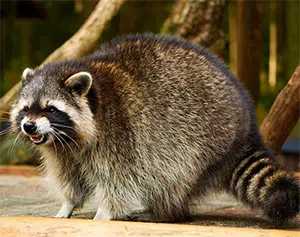
- Hissing, growling, chattering teeth, or snorting;
- Charging or making feinting attacks;
- The animal stands its ground when approached, refusing to retreat;
- Increased bold behavior, even during daylight hours, as they tirelessly forage for their growing litter.;
- Increased aggression towards family pets;
- Attempts to “shoo away” or block entry into a building backfires — the animal may tear through siding or roofing to regain access to your home.
How Do I Get Rid of Geese on My Lawn?
- Written by: Dan Frankian
Picture, if you will: It's a hazy summer afternoon and you're relaxing in your beautiful backyard. Margarita in hand, you wonder if it's time to start the BBQ while you chuckle as you watch the kids run through the sprinkler. Ahhh... summer at its best. Except... there's now a pair of Canada geese in your yard. The kids aren't happily screeching anymore, they're terrified of the large and aggressive birds. The lawn you just mowed this morning is being 'fertilized' heavily and frequently. Suddenly, the idyllic summer day doesn't seem quite so perfect anymore. In this article, we'll have a look at what you can do to get rid of geese and make your lawn less attractive.

Homeowners all across the GTA take pride and joy in their backyards and lawns. Much time, effort, and money goes into creating the oasis we want to come home to during the oh-so-short summer months. It is heart breaking to see those efforts and our lawns destroyed by protective and aggressive geese and their excessive daily droppings.
Why Is My Lawn a Goose Magnet?
- Short Cut Grass
The shorter you keep your grass, the better geese like it! Geese (and especially goslings) adore the tiny fresh green shoots when they first come up. A short lawn allows geese to easily get at those. - Open Space
Geese prefer their surroundings to be open and with unobstructed views. It aids with spotting predators early enough to escape. - Water Features
Your lawn will be even more popular with Canada geese, if you have any sort of water feature or little pond.
Lawn-Specific Problems Geese Cause
- Droppings Everywhere
A single adult Canada goose can produce about 1 to 2 pounds of droppings every day. This makes walking barefoot or playing on the grass unsafe and unhygienic. - Ruined Grass
Because geese go after brand new green shoots, your grass never has the chance to properly regenerate. Even a pair of geese can cause root damage and excessive goose poop leaves burnt and bald patches in the grass. - Nesting Geese
A nesting pair of geese will not only ruin your lawn this year, but return next year, bringing along their now year old offspring. In no time at all, you will have your very own flock of Canada geese in your backyard - and the damage to your lawn will quickly multiply. - Increased Costs
All of your lawn care is likely costly - and in vain. No amount of fertilizing and/or reseeding is going to fix the damage caused by squatting geese.
What Doesn’t Work – Avoid Wasting Time and Money
- Audio Devices (Noise Makers, Ultrasonic Sounds)
Auditory deterrents are largely ineffective - geese are smart and adapt quickly. They'll soon realize that there is no actual physical danger and ignore the sounds. - Visual Deterrents (Owl Decoys, Shiny Objects, Predator Kites)
While you may see an immediate reaction, these strategies don’t fool geese for long. If there's any success to be had with visual geese deterrents for lawns, they need to be moved around daily so that geese cannot become habituated. - Motion-Activated Sprinklers
Unsurprisingly, geese (water fowl) aren't terribly concerned with sprinklers. They may startle a goose or two the first couple of times they turn on but will have no effect thereafter.
The above methods do not have any long-term value when it comes to getting rid of geese on your lawn. Geese are very intelligent birds and become habituated quickly. Once they realize that they are not in any actual danger, they'll quickly learn to ignore your efforts.


